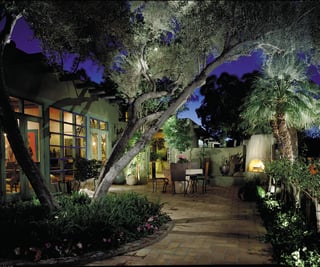Yep. There are a lot of LED lamps available online today. And while those lamps are often available at a significant discount, there can be a substantial difference in quality. Horizon only sells products from quality lighting manufacturer partners (Vista, Unique, FX, Kichler & Brilliance) that make professional-grade, reliable products. There is a difference! See for yourself…

- Distributor Support – no matter where you buy, product quality and warranty issues can arise. When there is an issue with products bought online, there is often only an email address provided for you to use when seeking support. Great. But wouldn’t you prefer a living, breathing human being that is available to assist with everything, from troubleshooting to returns?
- Warranty & Longevity – Quality lighting manufacturers stand behind their warranty. So, the expectations behind a 5 year warranty and 35,000 hour life are real and supported. Cheap LED’s will commonly state they last for 20 years, but on the back of the box it will say “when run 3 hours a day”. Some even say not to run more than 5 hours at a time or they’ll burn out prematurely.
- LED Binning – LED’s are grown more than created. As a result, their color temperatures (2700 Kelvin, 3000 Kelvin, etc.) are all over the board, so they must be sorted. This process is called binning, and it’s expensive. Quality manufacturers bin their LED’s, and as a result give consistent color temperatures. So 2700K is 2700K. Cheap online LED’s save money by skipping the binning process, and the result is an unprofessional, inconsistent color temperature, where 2700K can be +/- 500K.
- Inconsistent Light Output (Lumens) – Quality manufacturers utilize photo-spectrometers to measure the output of their lamps. This is another quality control step that cheap LED manufacturers skip, which leads to inconsistent output across the lighting system, causing Mrs. Smith to ask why one light hits the top of her trees and the other doesn’t.
- Thermal Management (Heat Sink) – In order to generate a lot of light at a very low power consumption rate, LED’s “burn” very hot. This generated heat has to be managed, or dissipated, properly. Horizon’s professional quality LED lamps have this heat sink built in. Most cheap LED manufacturers provide sub-standard heat sinks, which can lead to premature failure and even fire.
- Indoor/Outdoor/Enclosed Fixture Rated – The LED lamps sold at Horizon are designed and manufactured to be used outdoors in an enclosed fixture. Most of the lamps available online come in packaging that clearly states they are not intended to be used outdoors, or in an enclosed fixture. Using these lamps can lead to premature failure, and other issues.
- UL, CUL or ETL Listing – all of the LED’s lamps that Horizon sells are rated by one of these entities, which all uphold the same level of standards. Many online LED lamps are not rated/listed, and therefore are manufactured without having to adhere to any standards. This really should speak for itself; the standards are there for a reason.
- FCC Listing – All Horizon-sold LED lamps are FCC listed. Most online LED lamps don’t carry FCC clearance. Electronic products that aren’t FCC compliant can cause many kinds of issues, from opening a neighbor’s garage door or messing with Aunt Harriet’s pacemaker.
- Rated 8-15 or 8-25 volts – Horizon’s LED lamps are rated to operate consistently across a wide voltage range and maintain a constant light output across the range. Most cheap LED’s are not manufactured to meet these ranges, resulting in small voltage spikes that can cause early lamp failure and varying light output.
In our business relationships are important. You can rely on your relationship with Horizon to support you and your business every step of the way. Why risk your relationship with your client by installing inferior products to save a few bucks? Want to know more? Stop by your local Horizon store today.


